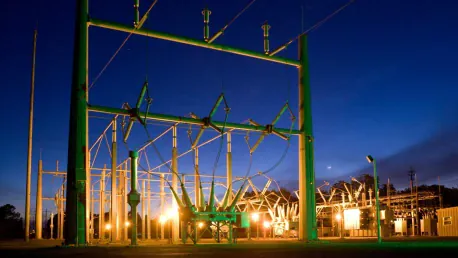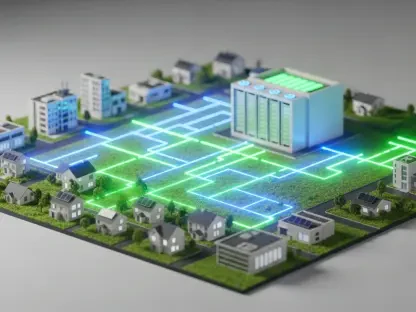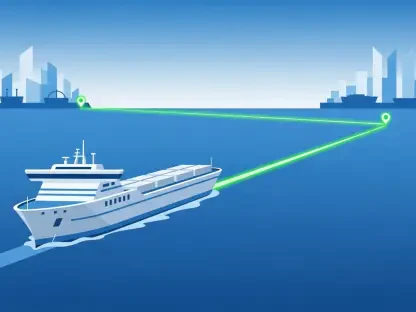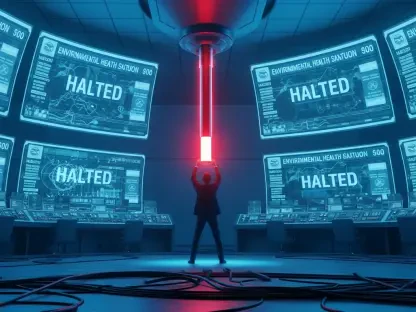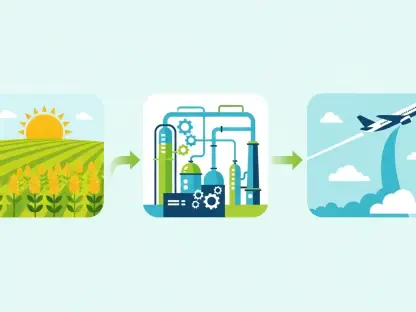Recent advancements in technology have highlighted the significant untapped potential of the U.S. power grid. Despite substantial investments in infrastructure, congestion costs continue to escalate, signaling a pressing need for innovative solutions. Among these solutions are software-driven technologies and Dynamic Line Rating (DLR) systems, which promise to enhance grid capacity and efficiency, ultimately supporting the growing energy demand.
Understanding Grid Capacity and Challenges
Existing Potential and Costly Congestion
The current U.S. power grid has the potential to deliver up to 30% more power if managed correctly, potentially saving billions in congestion costs annually. Despite recognizing this potential, congestion costs have surged from $8 billion in 2021 to over $11 billion in 2023. These escalating costs underscore the urgency of adopting new strategies to optimize grid performance. Instances of severe price fluctuations, such as the recent spike in the Electric Reliability Council of Texas (ERCOT), where prices skyrocketed to $28,000 per megawatt-hour, further emphasize this need. Such price spikes drive home the point that without immediate and effective solutions, the financial burden of inefficiency will continue to mount, affecting consumers and the broader economy.
Transmission Constraints
Research from Duke University reveals that U.S. power plants can handle nearly 100 gigawatts (GW) of new loads, provided these loads do not coincide with peak demand periods. The study indicates, however, that existing transmission constraints often prevent the effective and timely delivery of power, even during non-peak times, due to grid management challenges rather than physical capacity shortages. The primary issue, therefore, is not a lack of energy production capability, but rather the limitations in the transmission system’s ability to distribute energy when and where it’s needed most. Addressing these constraints requires a comprehensive approach to grid management, one that leverages technology and operational best practices to ensure reliable power delivery across the nation’s diverse and expansive grid network.
Implementing Grid-Enhancing Technologies
The Role of Grid-Enhancing Technologies (GETs)
Grid-Enhancing Technologies (GETs) are integral to maximizing the efficiency of the existing grid. These technologies enable more effective usage of current infrastructure by re-routing power through less crowded pathways or dynamically adjusting the transmission line’s capacity based on real-time conditions. Through such adaptive strategies, GETs help mitigate congestion and optimize the distribution of energy. Among the various GETs, Dynamic Line Rating (DLR) stands out as a particularly promising solution. By leveraging real-time data on weather conditions and other factors, DLR allows transmission lines to carry more energy safely and efficiently, thus providing a significant boost to overall grid capacity without the need for extensive new infrastructure investments.
Dynamic Line Rating (DLR) Explained
Dynamic Line Rating (DLR) is a cutting-edge technology that enhances the carrying capacity of transmission lines by accounting for variable factors such as wind speed and temperature, which influence line cooling and therefore capacity. In favorable conditions, such as cold and windy weather, DLR can increase transmission capacity by up to 40% annually. However, the accurate implementation of DLR has faced challenges, primarily due to the difficulty of precise weather forecasting for specific sections of power lines. Historically, grid operators have had to rely on conservative estimates to ensure safety and reliability, leading to the underutilization of available capacity. To harness the full potential of DLR, improvements in weather forecasting accuracy are essential, along with better integration of these forecasts into grid management systems to enable more responsive and flexible operation.
Economic and Regulatory Barriers
Misaligned Economic Incentives
One significant barrier to the widespread adoption of DLR is the misalignment of economic incentives. Under the current regulatory framework, utilities do not directly benefit from reducing congestion costs, which are typically borne by system operators and ultimately passed on to ratepayers. This misalignment means that utilities have little financial motivation to invest in DLR technology, as the cost savings from reducing congestion do not translate into direct profits for them. Consequently, the regulatory environment inadvertently discourages utilities from adopting DLR and other advanced grid-enhancing technologies, further exacerbating inefficiencies within the power grid. Overcoming this barrier will require substantial regulatory reform to realign incentives and encourage utilities to invest in technologies that enhance grid efficiency and reliability.
Contrasts with European Adoption
In contrast to the U.S., Europe has seen a more robust adoption of Grid-Enhancing Technologies, driven by better alignment of economic incentives and regulatory support. In many European countries, transmission owners also act as system operators, giving them a direct stake in reducing congestion and improving grid efficiency. This alignment has facilitated the successful implementation of DLR across entire grids in countries like Finland, where both regulatory mandates and inherent economic benefits have spurred adoption. Finland, for example, has seamlessly integrated DLR with both hardware and software solutions to optimize grid performance without the need for extensive regulatory compulsion. The European experience demonstrates that, with the right regulatory and economic structures in place, the widespread adoption of advanced grid technologies is not only feasible but also beneficial.
Advancing with Software-Driven Solutions
FERC Orders and Utility Response
The Federal Energy Regulatory Commission (FERC) has taken steps to improve grid capacity through its Order 881, which mandates the use of Ambient Adjusted Ratings (AAR) by July 2025. AAR considers current air temperatures, which can enhance transmission capacity compared to static line ratings. However, these adjustments still fall short of the potential gains offered by Dynamic Line Rating, especially under windy conditions. Despite the potential for improved efficiency, many utilities have requested extensions for compliance with FERC’s mandate, citing cost concerns and perceived insufficient benefits of implementing DLR. This reluctance underscores the need for continued regulatory encouragement and financial incentives to drive the adoption of these advanced technologies, ensuring that the potential benefits of AAR and DLR are fully realized.
Software-Driven DLR Solutions
Software-driven solutions present a viable and increasingly attractive alternative to traditional hardware-based DLR implementations. Advances in precision weather forecasting technologies, leveraging detailed LiDAR and satellite data combined with machine learning algorithms, now offer accurate and reliable forecasts that can be effectively integrated into grid management systems. These software-based solutions provide a cost-effective, scalable, and rapid approach to enhancing grid capacity without the need for extensive hardware deployment and maintenance. By enabling more precise and dynamic adjustment of transmission line ratings, software-driven DLR can significantly boost grid efficiency, reduce congestion, and lower operating costs. This innovative approach aligns well with the growing emphasis on smart grid technologies and the need for adaptable, resilient power infrastructure.
Transforming Utilities’ Economic Models
Unlocking Financial Benefits
Adopting Grid-Enhancing Technologies, particularly software-based DLR systems, holds the potential to transform utilities’ economic models by enabling them to handle increased load growth profitably. By optimizing the use of existing grid infrastructure, utilities can increase their capacity to serve additional demand without the need for costly new construction. This increased efficiency can lead to substantial reductions in congestion costs, which in turn helps to stabilize and possibly lower energy prices for consumers. Moreover, the enhanced reliability and flexibility of the grid can improve overall service quality, reduce the risk of outages, and support the integration of renewable energy sources, contributing to a more sustainable future.
Embracing a Sustainable Future
Recent advancements in technology have unveiled the enormous untapped potential within the U.S. power grid. Despite extensive investments in infrastructure, congestion costs are still on the rise, indicating a crucial need for innovative strategies. Among the most promising solutions, software-driven technologies and Dynamic Line Rating (DLR) systems stand out. These technologies offer a pathway to significantly enhance grid capacity and efficiency, addressing the burgeoning energy demands. Software-driven tools can optimize energy distribution, reduce bottlenecks, and improve overall management of the grid. On the other hand, Dynamic Line Rating systems can provide real-time data on the capacity of transmission lines, facilitating better decision-making. By integrating these advanced technologies, the power grid can evolve to meet increasing energy needs while managing costs more effectively. As we move forward, prioritizing such innovations will be vital in ensuring a more resilient and efficient energy infrastructure for the future.
